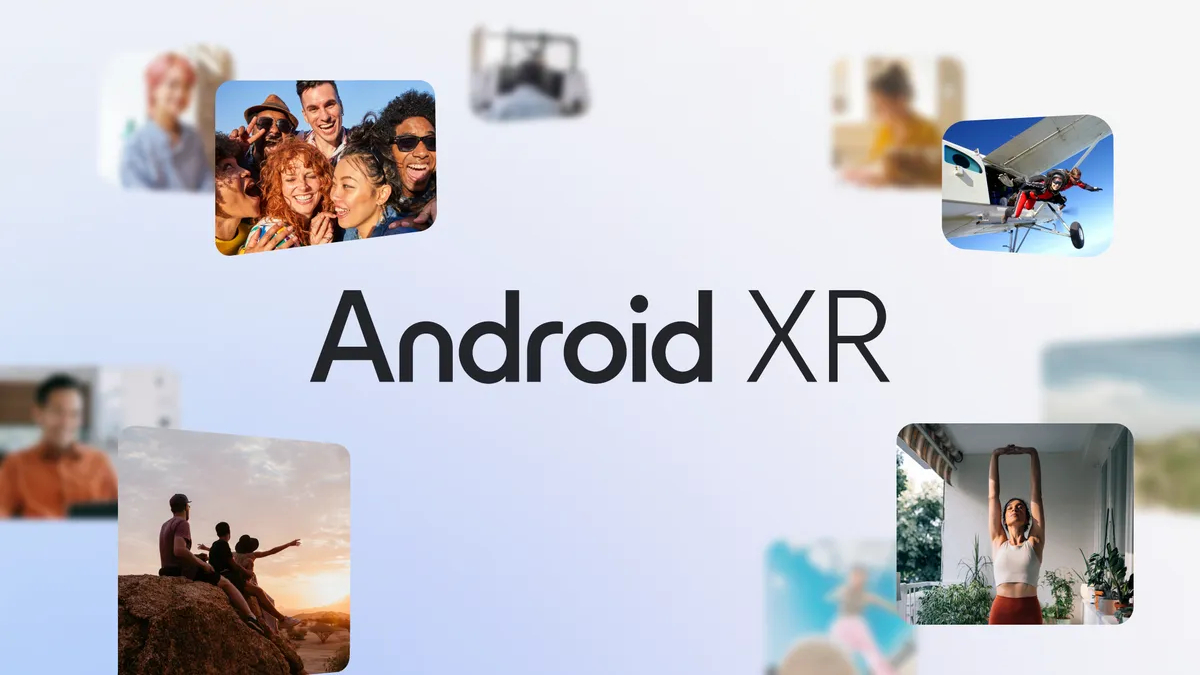
Google is introducing its own spin on headsets and smart glasses with the announcement of Android XR: a new operating system built for extended reality (XR) devices.
As announced, Google will fully use Gemini AI and collaborate with Samsung and Qualcomm to bring "helpful experiences to headsets and glasses" through Android XR. The first device to show off what it can do is Samsung's Project Moohan — which is set to be available in 2025.
With Android now entering the XR space, the Apple Vision Pro and visionOS will see some heavy competition.
But what is Android XR, and what can it do for a new generation of AI-powered headsets and glasses? Here's everything we know so far for all your burning questions about Android XR.
What is Android XR?

Android XR is Google's new operating system for extended reality devices, including XR headsets and glasses. It extends the tech giant's Android operating system to smartphones, tablets and TVs.
The operating system aims to allow developers and device makers to create new XR experiences for headsets and glasses using familiar Android apps and tools. This includes Google's suite of apps, such as Google Photos, Google Maps, Google TV, Chrome, YouTube, and more.
This means you'll get to use these apps in a virtual landscape, similar to what the Meta Quest 3 and Quest 3S mixed-reality (MR) experiences have to offer. And, of course, the Apple Vision Pro.
As Google states, Android XR allows developers to build apps and games for its devices. The initial tools include ARCore, Android Studio, Jetpack Compose, Unity and OpenXR.
Along with partnering with Samsung to develop the operating system, Google will get support from chip maker Qualcomm to power these devices. Qualcomm partners like Sony, Lynx, and XREAL can make their own devices using Android XR.
"Advancements in AI are making interacting with computers more natural and conversational," the VP of XR at Google announced in the blog post. "This inflection point enables new extended reality (XR) devices, like headsets and glasses, to understand your intent and the world around you, helping you get things done in entirely new ways."
It will be a while before we see Android XR in action on headsets, but we're already excited about Android XR in smart glasses.
What can Android XR do?

If you're familiar with the capabilities of the Apple Vision Pro or Meta Quest 3 headsets, imagine Android XR adding a "Google" spin on things.
While developers will create different XR experiences based on Android XR, we already have a sneak peek at what it can do. For example, headsets can switch from a fully immersive virtual environment to a real-world setting.
As with Apple and Meta headsets, it allows you to "fill the space around you" with different apps and content — layering them on top of what you can see in the real world and a virtual setting.
Google Gemini will also be a highlight. If asked, the AI assistant will tell you what you see and allow you to control the device. The Ray-Ban Meta smart glasses have a similar approach with AI capabilities, and Google is following suit.
Then there's the apps. As mentioned, Google will bring many of its apps straight to an Android XR device, but in a "reimagined" way. So, you can watch YouTube videos and shows on Google TV on a virtual big screen, see your Google Photos pictures and albums in 3D, and create several virtual screens when surfing the web on Google Chrome. Plus, Circle to Search is added, allowing you to look up anything you see with a "simple gesture" (which I expect will be a circular motion with a finger).
As another perk, mobile and tablet apps on the Google Play Store will be available for Android XR headsets, with Google announcing that more XR-focused apps, games and content will be available next year.
As for glasses, Gemini will take center stage, with Google wanting its AI to be "one tap away." As expected, Android XR glasses will be able to translate what you see and hear in real-time (as seen in the video above), offer directions to destinations you need to go and show message summaries you received on your phone.
Google expects Android XR to "seamlessly" work with other Android devices, and since it runs on the same operating system, I can imagine it doing so. As with the Ray-Ban Meta glasses, Google wants to make Android XR "stylish, comfortable glasses you'll love to wear every day."
Android XR: What to expect
There's still much to learn about Android XR, but we already know what Google's new operating system will bring to XR headsets and glasses. It aims to be a unified platform for developers and manufacturers to create new XR experiences and devices. We will surely see even more headsets and glasses targeting the Apple Vision Pro and Ray-Ban Meta smart glasses.
Google will soon be testing Android XR on prototype glasses to a small group of users, but there's no word yet of when smart glasses with Android XR support will arrive. In the meantime, we have Samsung's XR headset to look forward to, which will be the first device to bring Android XR.
While we wait to see what else Android XR brings to the table, check out how Xreal's smart glasses are a leap forward for AR.






